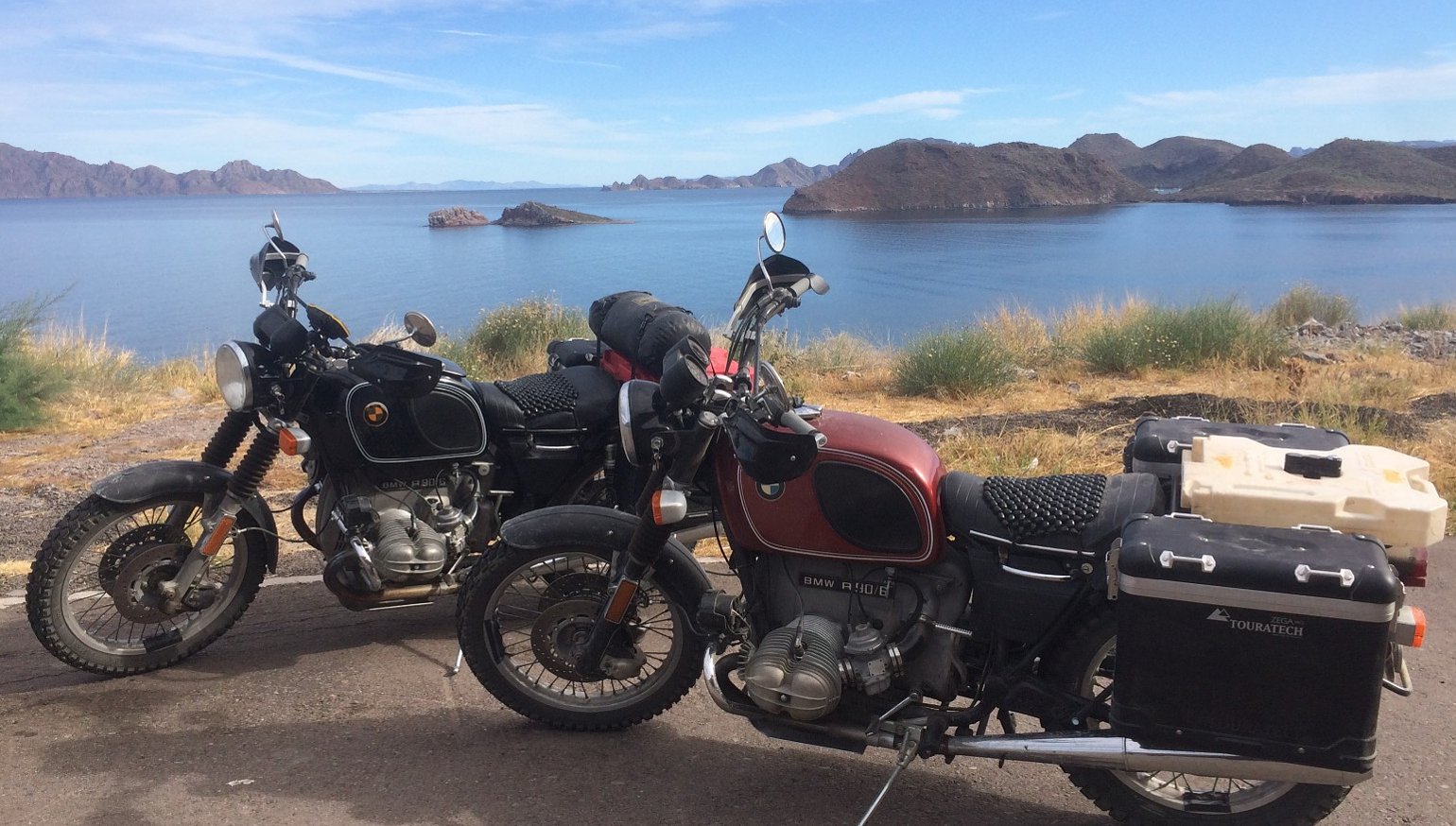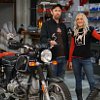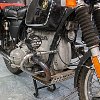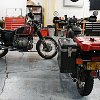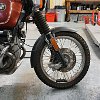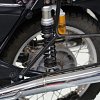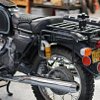“There are two rules for riding in Baja,” Daric Cheshire told me. “Rule #1 is don’t ride after dark, and Rule #2 is if you see gas, buy gas.”
When he and his partner, Mica Grohn, violated Rule #1, she ran afoul of a giant Mexican pothole that severely dented her front rim. That required a stop at a local llantera for some rim straightening, but other than that, Daric and Mica’s bikes were flawless on a trip the full length of Baja.
Pretty impressive considering that the machines they rode were well used 1974 BMW R90/6 airheads. A far cry from the adventure bikes — with a foot of ground clearance and suspension travel — that you’d expect to see on Mexico’s famed Highway 1, or the full-on enduro bikes you’d normally see off the main roads.
But these old BMWs only look stock; in day-to-day life, Daric’s the man behind Portland, Oregon’s renowned Cheshire Motorsports shop, which specializes in vintage-to-modern BMW and Ducati twins. Daric and Mica (also a very experienced rider) had the idea of building a pair of "world bikes" they could take on grand adventures.

“Of course, we could have bought modern adventure bikes,” he told me, “but I liked the idea of being able to take a vintage bike anywhere.” So he took on the challenge of preparing bikes that were as old as he is.
Modifying a 45-year-old airhead for modern-day adventure
The plan took shape around two identical bikes, which minimized the number of tools and spare parts they’d have to carry. Daric’s /6 came into the shop a few years ago when a non-rider inherited it. Mica’s bike was acquired in much rougher condition by her dad at an estate sale for $500.

Over a period of about six weeks, both bikes were uprated with Seibenrock 1,000 cc cylinders, which come with full rod, piston, and ring kit. Besides more power, the kits also gave the bikes modern nikasil-plated bores. The heads were decked and new valve seats were cut by Baisley Hi-Performance, a respected local speed shop. New valves, springs, and guides with seals were installed. Other than that, the motors are stock.
Cheshire installed Sachse electronic ignition, but left the points in place. “I have no patience for mechanical problems,” he said. “This way, if there ever is a problem with the electronic ignition, I can lift the tank, switch one wire, and go back to points.”
They also upgraded to 450-watt alternators by changing out the old BMW diode board and stator assembly and installing a modern regulator-rectifier supplied by Euro MotoElectrics in Denver. That gave them ample power to run heated grips and extra lights and charge their phones at campsites. Batteries were replaced by Westco sealed units.

The PIAA auxiliary lights mounted on the pattern crash bars are fog lights, not driving lights. “I don’t want to blind anyone,” Cheshire told me. “I just want to be able to see and be seen in dust and fog. For now, they’re both running stock headlights, although a change to LED bulbs is in the cards.
Each bike has a BMW Powerlet wired in for heated vests or a charging device. “They didn’t have this part in ’74,” Daric admits. “But they had it by the early ’80s.” The PIAAs and Powerlet are wired into a custom subharness.
As for the rolling chassis, they selected Heidenau K60 Scout tires. “They’re a nice 50-50 tire, that we already had a lot of experience with,” he said. “We’ve ridden them in all sorts of terrain. They feel really nice on the road; they get good mileage; and they’ll handle sand with the right throttle control. They’re not ideal, but they can cover a wide range uses.”
They also went with Bridgestone heavy-duty inner tubes. In 1974, /6 models came with a front fender that almost reached the ground at the back of the front wheel. They replaced those with shorter fenders from later models because they were afraid they might catch on rocks.

Dual-disc brakes were an option in 1974, and although neither of their bikes came that way, Cheshire sourced the new fork sliders they needed to make the conversion. They installed semi-floating EBC rotors, EBC pads, and Spiegler steel brake lines. The only other change to the forks was they got Progressive springs.
“So no Gold Valve kits?” I asked, to which he replied, “Not yet.”

At the rear, shocks were upgraded to Öhlins BM1410 piggyback shocks. “They’re not the most economical, but I have a good relationship with Öhlins,” Daric said. “It’s one of the few vintage things they still make. People complain that they’re stiff (as delivered) but we were going to load them up so I was fine with that. For obvious reasons, I got Mica softer springs."
Both bikes originally came with taller, U.S.-market handlebars. They were replaced by Tomaselli handlebars, replicas of the ones on early 1990s GS models. Maier handguards were installed for both warmth and lever protection.
“They’re classic looking,” Cheshire said. “All the other ones are for the neon crowd; they’re goofy and vented.” Heated grips were installed. They weren’t need in Baja, but that was only a shakedown run. Who knows where they’ll go next? Daric’s handlebar has a Ram mount for a Garmin GPS unit.
“The circuit boards in the instrument cluster are notorious for getting hairline cracks and being very dim and going bad,” Daric told me. “So Mica’s bike has an LED aftermarket dash. I have one for my bike, too, but haven’t installed it yet.”
The seats are replicas of the seats that came on BMW police bikes. Mica’s has the foam cut down slightly to lower the seat height.

The most noticeable custom feature are the mounts for the Touratech hard cases and Roto-pax (one bike carries extra fuel, the other one carries water.)
Touratech has no applications for a 1974 R90, so Daric ordered two pairs of anodized cases and two "DIY kits," which are basically the "oval" mounting points. Those are 18 mm OD steel tubing that’s hard to find in the United States.
Daric designed and welded up the rest of mounting system and racks from 5/8-inch steel, after looking at Moose bags and stock GS mounts for inspiration.

Literally last but not least, the aluminum skid plates were made the night before they left for Baja. They’re mounted to oil pans from later-model airhead GS bikes, because those already have bolt holes.

Putting the build to the test
Last year over Mica’s Christmas break — she’s an elementary school art teacher — the two rode a total of 4,000 trouble-free miles up and down the length of Baja. Well, except for that famous rim-denting pothole which happened right at the beginning of the ride. (They transported the bikes from Portland to San Diego in the shop’s van.)

“We were kind of violating that first rule,” Daric recalled. “It wasn’t really dark, but we were in a hurry to get to our destination for the night, so we didn’t stop to switch to clear visors.”
“It was about a foot and a half deep and the full width of the lane,” Mica added. Daric got through it without mishap, but Mica’s line must’ve been slightly different. The impact with the edge of the pothole caused her handlebar to spin around the mount.
“I was off the pegs," she said. "Suddenly, my mirrors were pointing at the sky, and at that point I wondered what else might’ve been damaged, so I waved to Daric.”
“I thought she was just waving, like, ‘That was crazy!’” said Daric, picking up the story. “But then she kept waving, so I stopped.” After re-tightening the handlebar, they realized that the rim had a big dent in it, though the tire never lost air. They got back on the road and traveled a little slower to their destination for the night.

The next day, Daric found a tire shop that was happy to loan him a mallet and a few miscellaneous clamps and scraps of wood and metal he could use to straighten the rim as much as he dared. After losing a day to the repair, they were back on the road.

“Baja’s frightening,” Daric admitted. “It’s twisty and beautiful, but there are abandoned vehicles on the side of the road...”

“...and the road surface is terrible; you’re just weaving through potholes,” Daric concluded.
In spite of all that, they didn’t have any further mechanical issues, even though they challenged the R90s with a gnarly side-trip from Loreto, on Baja’s east coast, inland to Misión San Francisco Javier de Viggé-Biaundó, over miles of two-track and rocks, complete with river crossings. They also rode the East Cape road, a day of deep sand. The only time Daric even opened his tool kit after the pothole incident was late in the trip, when he took the spacers out of their forks to soften up the ride.

So, how could you get one of these BMWs?

“I would,” Daric told me. “I have sworn off ‘customs’ because they’re customer customs and there’s nothing more infuriating than being told what to do. But I would make more like these; either full builds or parts like the Touratech mounts and skidplates.”
Finally, that brought me to the $20,000 question: “What would a guy have to pay to get one?”
“About as much as a new GS,” he warned. “It would cost as much as a new bike, because it is one. We changed every single bearing, seal, and gasket. We rebuilt them from the ground up. We didn’t just tune them up and put fancy stuff on them.”

So, for the price of one of Daric’s airhead adventure bikes, you could ride a new R 1250 GS. But if you bought the new one, you’d look like everyone else.




